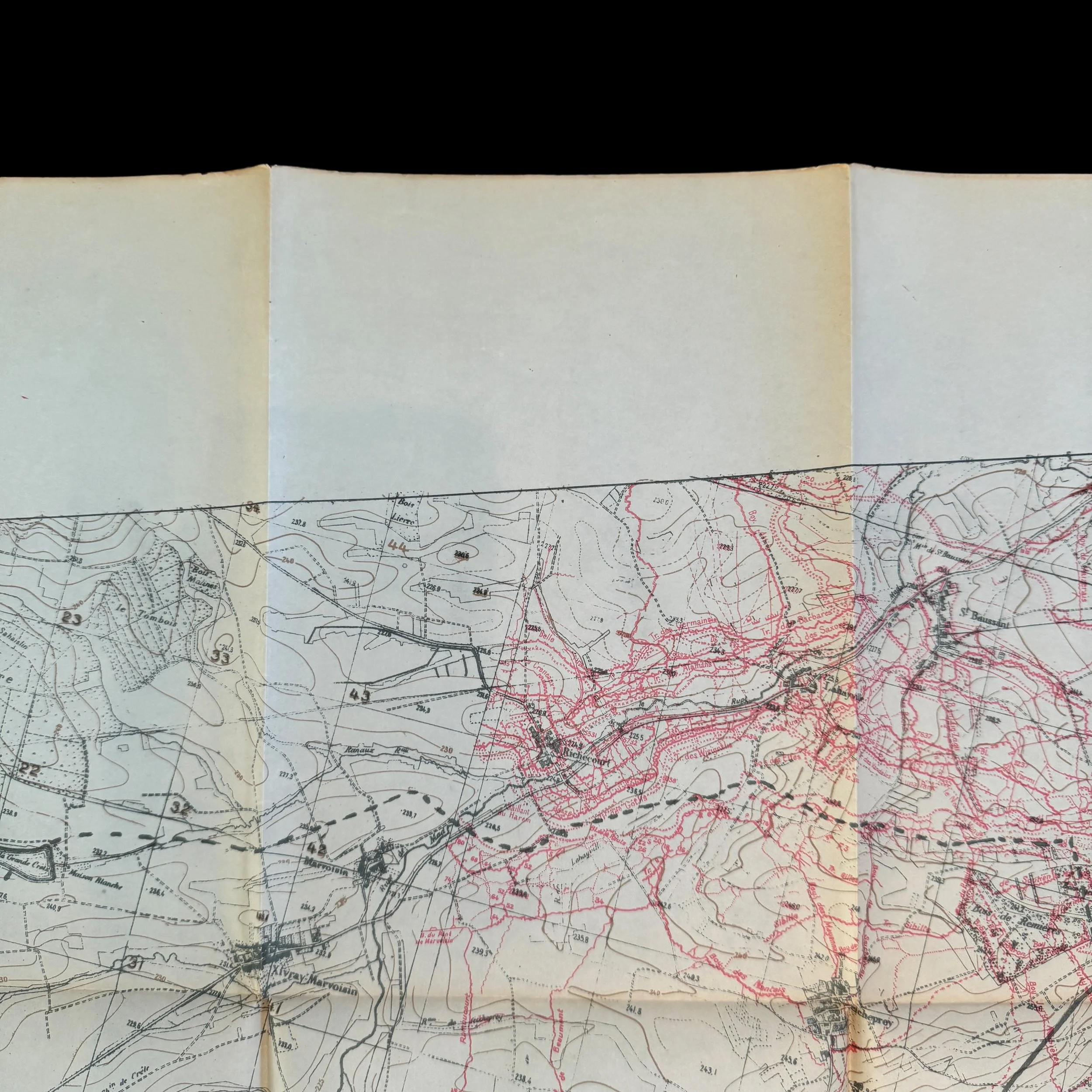RARE! World War I Ansauville Sector American Expeditionary Forces' (AEF) Operation Map
























RARE! World War I Ansauville Sector American Expeditionary Forces' (AEF) Operation Map
Comes with a hand-signed C.O.A.
This rare and museum-grade World War I map shows the Ansauville Sector. Located in the Lorraine region of France, the Ansauville Sector was part of the American Expeditionary Forces' (AEF) area of operations. Its significance lay not in the scale of battles but in its role as a training ground for American troops newly arrived in Europe. The sector provided a relatively stable environment where soldiers could acclimate to trench warfare before being deployed to more intense combat zones.
Early Operations and the American Arrival
When American forces began arriving in France in 1917, the Allied command recognized the need for these troops to gain experience gradually. The Ansauville Sector, relatively quiet compared to the deadly fields of Verdun or the Somme, was an ideal location. The 1st Division of the AEF, known as the "Big Red One," was among the first American units to arrive and take up positions in this sector.
Upon arrival, the American troops found themselves facing a well-entrenched but not particularly aggressive German force. The primary challenge was adapting to the static nature of trench warfare, learning to live under constant threat of artillery and sniper fire, and mastering the logistics of maintaining supply lines and communication under such conditions.
The First Battle Experiences
While the Ansauville Sector did not witness large-scale offensives, it did see significant skirmishes and artillery duels. For instance, the 1st Division, after taking over the sector, engaged in several raids and counter-raids, which were crucial for gaining combat experience. These small engagements helped the Americans understand the intricacies of trench raids, artillery coordination, and the importance of no-man’s-land patrols.
One notable operation was a series of trench raids conducted in January 1918. These raids, although limited in scope, were critical for boosting the morale of American troops and disrupting German defenses. The American forces, employing surprise and coordination, managed to capture enemy soldiers and gather valuable intelligence.
The Role of the 1st Division
The 1st Division's time in the Ansauville Sector was marked by a steep learning curve. Under the command of General John J. Pershing, the division focused on rigorous training and integration of new tactics. This period was essential for transforming the AEF into a combat-ready force capable of taking on the German Army.
In April 1918, the 1st Division was relieved by the 26th Division, also known as the "Yankee Division." The 26th Division continued the pattern of trench raids and defensive operations, ensuring that the sector remained a training ground while also contributing to the overall stability of the front.
Later Operations and Transition
As the war progressed into its final phases, the focus of major operations shifted away from the Ansauville Sector to more critical areas. However, the sector continued to serve as a crucial training and acclimatization area for new American divisions arriving in Europe.
The 82nd Division, known as the "All American Division," also saw time in the Ansauville Sector. This division, composed of soldiers from across the United States, engaged in patrols and defensive operations similar to their predecessors. The experiences gained in the sector prepared the 82nd Division for future engagements in the Meuse-Argonne Offensive, one of the most significant American operations of the war.
Legacy and Impact
The Ansauville Sector's legacy lies in its role as a preparatory ground for American troops. The experiences gained here proved invaluable as the AEF moved on to more significant battles. The knowledge of trench warfare, artillery coordination, and small-unit tactics developed in the sector contributed to the overall effectiveness of American forces in later offensives.
The 1st, 26th, and 82nd Divisions, among others, all benefitted from their time in the Ansauville Sector. The relatively calm environment allowed these units to build cohesion, develop leadership, and understand the realities of front-line warfare without the overwhelming pressures faced in more contested sectors.
In conclusion, while the Ansauville Sector may not be as renowned as other areas of the Western Front, its importance cannot be understated. It was a vital training ground for the American Expeditionary Forces, providing a controlled environment where troops could learn and adapt to the demands of World War I. The operations conducted here, although limited in scale, were critical for preparing American soldiers for the intense battles that would follow. The sector’s contribution to the overall war effort underscores the complexity and depth of World War I, where even seemingly quiet zones played pivotal roles in the broader conflict.